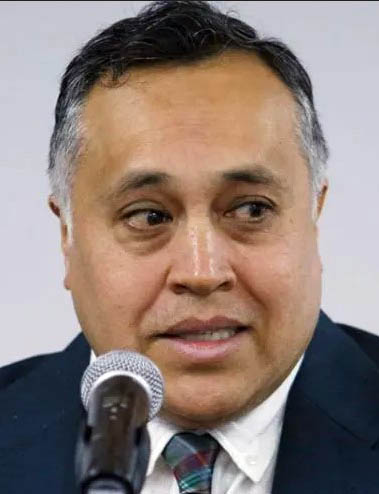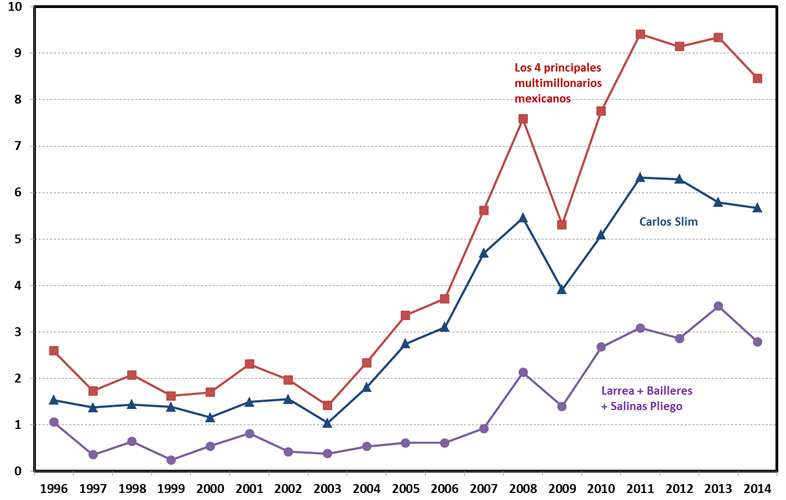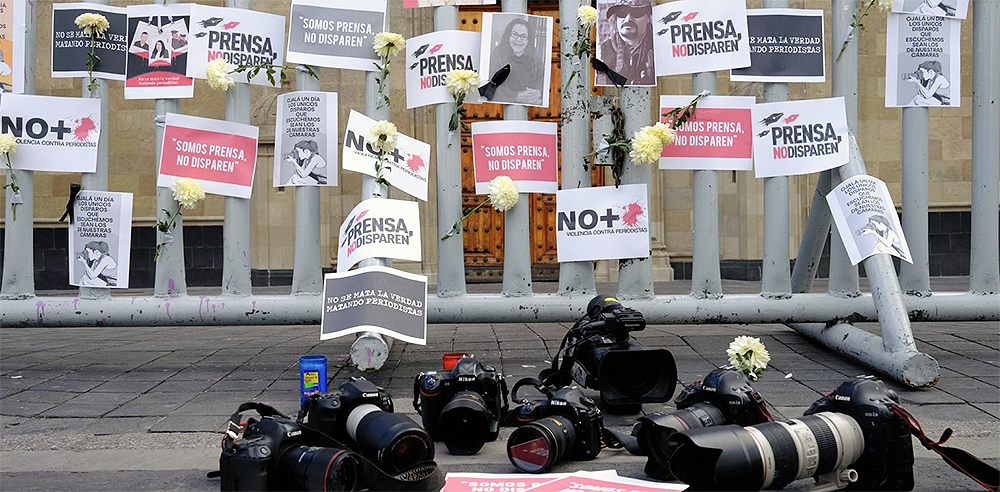|
|
|
|
The weekly newsletter of the México Solidarity Project |
|
|
|
February 16, 2022/ This week's issue/ Meizhu Lui, for the editorial team |
|
|
‘The Rich Get Richer and the Poor Get Poorer’ |
|
Years ago, I was talking with someone who was a child during the US Great Depression back in the 1930s. I’ve always remembered what she told me: “We didn’t know we were poor. You see, everyone around us was poor.”
Being poor has always been hard. But a life in poverty gets doubly hard when you know that others are living in luxury. In the 1930s, people in poverty couldn’t see inside that parallel universe. The media today puts that luxury in our face. We get addicted to watching the rich and famous.
In the 1980s, President Ronald Reagan proclaimed his administration had brought us “morning in America.” A lie. America’s days were actually darkening as Reagan and his pals rolled out cuts in services for the poor amid massive tax breaks for the nation’s wealthiest. The Reaganites busted unions, threw those with mental disabilities out into the streets, and shuttered public hospitals.
Privatizations fattened corporate wallets and left working families to sink or swim — with no lifeboats. The US then proceeded to export this “Reagan Revolution” to nations all around the world, including México. Predictably, levels of economic inequality soared.
Remember that old saw that “the rich get richer and the poor get poorer”? The rich would like us to see that state of affairs as some natural law, like water turning to ice at zero degrees Celsius. But changes in levels of inequality, the economist Andrés Peñalosa explains in our interview this week, reflect no “natural law.” They reflect what governments do. They reflect how people act and react.
In México, where the AMLO government appointed Peñalosa to implement increases in the minimum wage, more and more Mexicans want to reverse the neoliberal rich-and-poor dynamic. They want the rich poorer, the poor richer. They want real “morning in México.” |
|
|
|
Don’t miss an issue. Subscribe to the weekly México Solidarity Bulletin! |
|
|
|
|
Top to Bottom: Top Officials Raise Bottom Wages |
|
In 2018, the newly elected Morena government named Andrés Peñalosa, an economist at the National Autonomous University of Mexico and an expert on free trade agreements, the head of the National Minimum Salaries Commission. At long last, México had leadership committed to a significant uplift to the wages of the nation’s lowest-paid workers. What happened next? Peñalosa has a unique perspective on that story.
In the United States, income inequality has been rising since the 1970s. What has been happening in México? |
|
|
Andres Peñalosa: Under the PRI government, no nation in Latin America had a lower minimum wage than México. The wage gap between top and bottom earners grew during the neoliberal period, with the business class favored and benefits to the poor cut. Buying power for average Mexicans dropped by 80 percent.
To make matters worse, the Mexican economy became subordinated to the US and Canada. In 1991, wages in México ran nine times lower than wages in the US, and today, after almost 30 years under NAFTA, that ratio has grown even greater. During all this time, workers here in México had no defense. The charro unions agreed to low wages. They sold out workers to the PRI and corporate executives.
You served as the commissioner on minimum salaries under AMLO from 2018 to 2020. Have wages gone up since AMLO’s election?
The minimum wage rose twice during my tenure, and the minimum just rose again. Minimum wage workers labor mostly in the service sector, in workplaces like supermarkets. Some 14 million have had their incomes increased to $8.27 a day in US dollars, a 22 percent overall increase.
For the Northern states, the Mexican government felt that wages should be even higher for maquila workers, given the favorable tax breaks companies in that region were getting. The resulting negotiations between the government and the companies — affecting three million workers — didn’t go easily. The corporations stubbornly resisted any higher wages, as did the CTM unions.
But the wage hike was won, not just due to the stance of the Morena negotiators, but the persistent struggle of women workers. Their huge spontaneous strikes pressured the companies. Wages doubled for maquila workers, who now make $12.22 per day USD.
But so much more remains to be done. About 50 percent of workers work on their own in the informal economic sector. The salary reforms aren’t helping them. Mexican wages overall are running lower than China’s. I would sum up the situation by saying that the national government has led a modest recovery in workers’ wages. |
|
The wealth of the 4 richest Mexicans as a percent of GDP |
|
|
LSE Blog/London School of Economics |
|
Wealth makes for an even more important measure of economic inequality than wages. How much outrage erupted at the 2021 Pandora Papers revelations that named the wealthy Mexican politicians and businessmen who’ve hidden money to avoid taxes? |
|
The revelations didn’t cause much of a sensation in México. They just confirmed what people suspected all along. AMLO has not yet tried to lower income or wealth at the top. He has accepted investments from the rich. For example, Carlos Slim — net worth, $79.3 billion USD! — is helping to finance the Tren Maya project.
We also have an ideological problem. Many people have learned that “to be rich is good.” They believe in the myth that they, as individuals, can become part of the wealthy class and, as a result, don’t think in terms of the whole working class. But this myth is disintegrating, and the idea that everyone should pay their fair share is gaining traction.
Does the Mexican tax structure favor the rich?
Yes. For individuals, the top rate stands at just 35 percent. It should be double that! We have a sales tax on basic necessities like clothes and food. This burden falls heavily on the poor. Corporations, meanwhile, routinely skirt the tax on imports. For example, 50 to 80 percent of car components — like the brake parts essential to the finished product — come from outside of México. These small parts can easily get past customs. The smugglers are not just running drugs and guns! So corruption also remains a major factor.
Speaking of corruption, AMLO’s main strategy to address inequality has been to recoup money from corrupt politicians to pay for his new social programs. Is the take from that going to be enough?
The fight against corruption has had some good results. But these good results will not be sufficient. Right now, the government cannot afford to raise the wages of its own public sector workers any higher.
What other reforms does México need?
This government has taken the beginning steps, but we need a long-range integrated plan to make society more equal. And government is only one player — and not the most important. We need independent unions, like the rank-and-file union voted in earlier this month at the General Motors plant in Silao. By throwing out the old charro union, workers opened up groundbreaking possibilities for real change. Worker power will be the foundation for the well-being of the people of México. |
|
|
|
Find the Killers of Mexican Journalists — Now! |
|
México, what the hell is going on? I learned recently about the murder of journalist Roberto Toledo, the fourth media worker gunned down in México in less than a month: José Luis Gamboa, Margarito Martínez, Lourdes Maldonado, and now Toledo. He worked for Monitor Michoacán, a news outlet that had been reporting on stories about the movement of Indigenous communities for self-government, organized crime operating in the area, and payoffs to a corrupt local government to allow illegal logging. |
|
Working as a journalist in México has long been a matter of life and death. At least 145 have been murdered since 2000. And you know what, gente? In 95 percent of these murders, no one has ever been held to account. Yes, you read that right: In 95 percent of these cases, the killers continue to walk the streets. |
|
|
Under the PRI, the government set up a federal journalist “protection” program, to make it seem they cared about investigative journalists. The government now spends $23 million a year on this program, yet Toledo was still brazenly gunned down as he worked on his video column!
Mexican journalists are fighting back. On January 25, they organized rallies and vigils throughout México to protest the murders of their colleagues and demand an end to the disgraceful record of impunity that gives a green light to their killers. Without journalists, the people can never know the truth about corruption, environmental destruction, and organized crime, never learn about the brutal murders of women, and the violation of Indigenous rights.
The PRI and the PAN didn’t care if those who exposed their own corruption were eliminated. The AMLO administration has taken a much stronger stance in support of journalists, but, still, no assassin has yet been brought to justice.
Well, now our turn has come, gente, on both sides of the border. We need to stand with our courageous brothers and sisters who are demanding that México take stronger action to defend the lives of journalists, beginning with finding and prosecuting the killers who murdered Toledo and his colleagues. ¡Si, se puede! |
|
|
Recent news reports and commentaries, from progressive and mainstream media,
Gustavo Maranges, Recall Referendum; AMLO’s Master Class on Democracy and Accountability, Resumen. On April 10, voters in México will cast ballots in their first-ever opportunity to decide whether a sitting president deserves to continue in office.
John Ackerman, Vamos a democratizar Morena, Sin Censura. Estamos en momentos definitorios para la Cuarta Transformación, en que es urgente democratizar Morena para fortalecer el partido-movimiento que hace posible para el pueblo participar en este proceso político crucial.
Keristen Holmes, Three suspects arrested in Tijuana journalist's murder, CBS8. No word yet on the motive.
México vows to press on with power changes amid US concerns, Associated Press. The U.S. has expressed “significant concerns” over México’s plan to favor its state-owned electricity company over private and foreign firms.
Mary Anastasia O'Grady, A U.S. Ambassador Takes Mexico’s Side, Wall Street Journal. U.S. corporate interests are fuming over a rare show of support, from within the U.S. government, for AMLO’s energy reform.
Raul Cortes, Under pressure over energy plan, México president suggests pausing relations with Spain, Reuters. Corrupt Mexican governments in the past, says AMLO, rigged the energy market in favor of private interests that include major Spanish companies.
Hundreds of migrants protest as raids intensify in México, TRT World. Migrants in the southern Mexican city of Tapachula blast the slow pace of government visa approvals and threaten to form a fresh caravan that would head to the US border. |
|
|
The Mexico Solidarity Project brings together activists from various socialist and left organizations and individuals committed to worker and global justice who see the 2018 election of Andrés Manuel López Obrador as president of México as a watershed moment. AMLO and his progressive Morena party aim to end generations of corruption, impoverishment, and subservience to US interests. Our Project supports not just Morena, but all Mexicans struggling for basic rights, and opposes US efforts to undermine organizing and México’s national sovereignty.
Editorial committee: Meizhu Lui, Bruce Hobson, Bill Gallegos, Sam Pizzigati, Courtney Childs, Victoria Hamlin, Agatha Hinman. To give feedback or get involved, email us! |
|
|
|
Web page and application support for the México Solidarity Project from NOVA Web Development, a democratically run, worker-owned and operated cooperative focused on developing free software tools for progressive organizations. |









